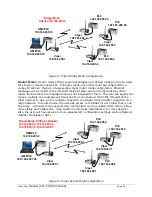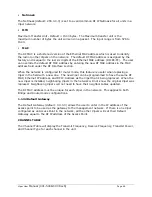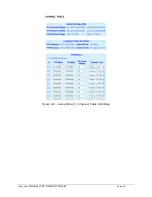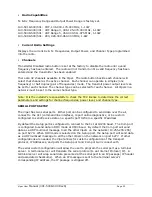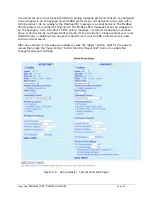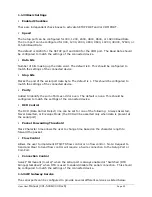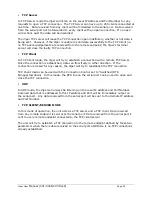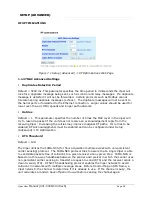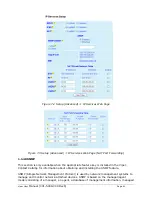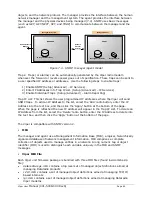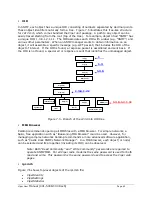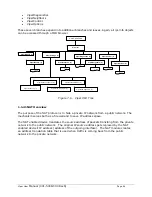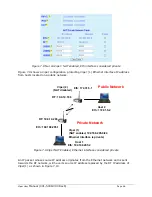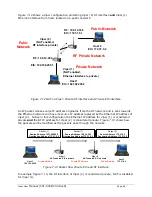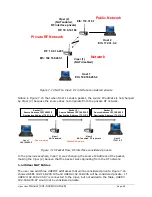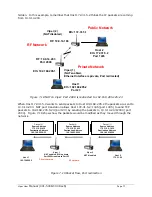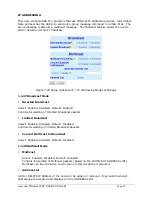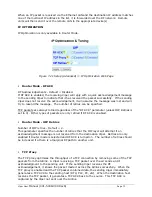
Viper User
Manual (001-5008-000 Rev6)
Page
58
S
S
E
E
T
T
U
U
P
P
(
(
A
A
D
D
V
V
A
A
N
N
C
C
E
E
D
D
)
)
RF OPTIMIZATIONS
Figure 7.1 Setup (Advanced)
D
RF Optimizations Web Page
1.1.37
MAC Advanced Settings
Duplicates Detection Period
Default = 5000 ms. This parameter specifies the time period in milliseconds the Viper will
look for a duplicate message being sent, such as control and relay messages. If a duplicate
message is detected it will not be forwarded. Certain protocols such as Modbus cannot
tolerate hearing duplicate messages (echoes). The duplicate messages will not be sent to
the Serial ports or forwarded to the Ethernet connection. Larger values should be used for
lower over-the-air (OTA) speeds and longer path networks.
Retries
Default = 1. This parameter specifies the number of times the MAC layer in the Viper will
try to resend a packet if the unit does not receive an acknowledgement reply from the
receiving Viper. Increasing the retries may improve marginal RF paths. For retries to be
enabled, RF Acknowledgments must be enabled and can be configured under Setup
(Advanced)
D
IP Optimization.
RTS Threshold
Default = 128.
The Viper utilizes the FAMA-NCS (for floor acquisition multiple access with non-persistent
carrier sensing) protocol. The FAMA-NCS protocol tries to assure that a single Viper is able
to send data packets free of collisions to a given receiver at any given time. FAMA-NCS is
based on a three-way handshake between the sender and receiver in which the sender uses
non-persistent carrier sensing to transmit a request-to-send (RTS) and the receiver sends a
clear-to-send (CTS). RTS/CTS handshaking protocol enables the Viper network to avoid
collisions in networks with multiple coverage areas. Before transmitting an RTS frame, a
Viper listens to the channel to determine if it is already in use. If the channel is busy, the
unit calculates a random back off period to wait before sensing the channel again.

